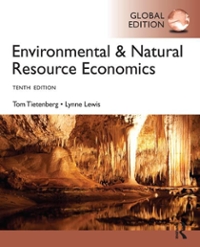Answer the questions below
1 Which of these is associated with the Keynesian school?
A rational expectations
B sticky wages
C policy ineffectiveness proposition
D real business cycle theory
DSGE models generally assume:
A perfect competition
B monopolistic competition
C oligopoly
D monopoly
The post-Keynesian economists were never participants in the mainstream consensus prior to the
financial crisis because:
I they are heterodox economists.
II they do not believe the economy is self-correcting.
III they believe that changes in levels of confidence change output and employment rather
than prices.
A I only
B I and II only
C II and III only
D I, II and III
23.4 Discuss the main arguments in the stimulus-austerity debate that took place in the post-201
asy = Ju'lpolk at = aw(k), where the prime on the discount factor indicates that it is valued at force of interest 8' and w(k) indicates a joint-life status with k "lives" (k is not neces sarily an integer). If p(x + +) = a + b(x + +) + c(x + +)2, confirm that (*) is satisfied if k = 2, xty W= 2 8' = 8 + c(x2 + 12 - 2:2). Find exy if qx = qy = 1 and the deaths are uniformly distributed over the year of age for each of (x) and (y). Let T(x) and T(y) be independent and uniformly distributed in the next year of age. Given that both (x) and (y) die within the next year, demonstrate that the time-of-failure of (xy) is not uniformly distributed over the year. [Hint: Show that Pr[T(xy) = t[(T(x) = 1) n (T(y) = 1)] = 2t - +2.] Show in1 - (1/2 - 12/3 + 12/4 - 14/5 + . . .)] 13 1974 = 1 + N/~. + + 12 24 720 . .). Hence, show 1 DIN + + .. . 360 Show that if deaths are uniformly distributed over each year of age, then (j-1)/mPxy - j/Pxy = 1 + m + 1 - 2j m m2 9 x qy for any x and y and j = 1, 2, 3, . .., m. Hence, verify (9.8.14). on 9.9 Show by general reasoning that n qxy = wxy + nix nly. When n - o, what does the equation become?. Show that the actuarial present value for an insurance of 1 payable at the end of the year of death of (x), provided that (y) survives to the time of payment, can be expressed as viiipiiw+1 aw. .ShothtAlyA:;=A A x}; 5\" -. Express, in terms of actuarial present values for single life and rst death contingent insurances, the net single premium for an insurance of 1 payable at the moment of death of (50), provided that {20), at that time, has died or attained age 40. -. Express, in terms of actuarial present values for pure endowment and first '0 death contingent insurances, the actuarial present value for an insurance of 1 payable at the time of the death of (x) provided (3;) dies during the 11 years preceding the death of (x). If Mac) = 1,1100 - x) for 0 5 x c: 100, calculate 25%;]. ion 9.10 L In a mortality table known to follow Makeham's law, you are given that A = 0.003 and c10 = 3. a. If 340,50 = 17, calculate \"43:50. b. Express 34%,:50 in terms of 340,50 and 540:3]. Given that mortality follows Gompertz's law with mix) = 10\" X 21\"\"8 for x :> 35 and that by (9.10.2) -4t%:48:m = failinm! calculate f and w. celleneous 1. |U a The survival status (ED is one that exists for exactly 11 years. It has been used in conjunction with life statuses, for example, in A\








